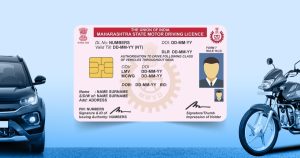In a world where instances of identity theft are increasing day by day, identity verification is one of the most reliable ways to build trust between any two parties. In simple terms, Identity Verification means a process that can prove or verify that someone does exist.
Fact is, in today’s world, it is no longer safe to blindly trust someone’s words. According to a survey conducted by Forbes, over 17 million people are impacted by identity theft every single year, especially consumers who are more than 50 years old are more vulnerable to such crimes. Even in India, there have been many instances of frauds conducted using Aadhaar. Just earlier this year, there were five cases of Aadhaar-related frauds where money worth lakhs was fraudulently taken out from customers’ accounts in two public sector banks.
Moreover, Andhra Bank has had four similar cases where a whopping amount of Rs. 4, 20,098 was taken out from certain customers’ bank accounts without their knowledge using their Aadhaar details. In fact, since 2015, the Indian banking department has received over twenty complaints regarding Aadhaar-related frauds. With so many instances of identity thefts, the only reasonable measure to build trust is to adopt identity checks.
Identity verification – A long-term solution
In India, identity verification is slowly, but surely becoming integrated in the way our economy runs. It is safe to say that in a few years, they will be fully integrated into the way we live our very lives. Today, we need to verify our identity by providing our national IDs before we apply for jobs; we need to complete our KYC in order to use every day apps like mobile wallets. Requirements like these show the pressing need for identity verification in the world today.
The rising popularity of national identity verification also means that biometrics too are gradually becoming the norm in identity checks. Soon, it is a possibility that elements like retina scan and other neurological processes may become the normal parameters for identity verification. They provide a more secure and solid fence when it comes to identity thefts.
However, your biometrics are not readily available to others, unlike your personal details. Given their security, reliability as well as scalability (they are already in use to a certain extent), they appear to lead a hopeful and more secure future for identity verification. After all, it is next to impossible for someone to steal your fingerprints, iris and retina patterns, hand geometry, voice waves and so on.
APIs – The basis of identity verification
Today, identity checks are done based on the government’s database, facilitated by the use of advanced APIs (application programming interface), as well as complex and intelligent search algorithms. API, which stands for Application Programming Interface, is a software intermediary which enables two different applications to interact and communicate with each other. It is the main technology behind all kinds of national identity verification today.
Here’s how it works.
When a background screening company conducts an identity search, it is basically sending out a request to the government’s database for access so that whatever is needed like identity, age, address and more can be verified. API is the middleman that sends this request for access and sends back the response, that is, the verification result to the company. This process aids in conducting instant identity verification.
Today, API is the building block of national ID checks, enabling verification of personal details and information about an individual. But with the rise in biometrics, this may not be the norm of identity verification very soon.






